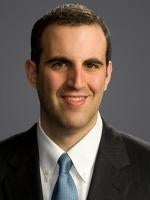On November 3, 2020, Colorado voters passed Proposition 118, a ballot initiative establishing a paid family and medical leave program. The new law, known as the “Paid Family and Medical Leave Insurance Act,” provides for 12 weeks of paid family and medical leave funded through a payroll tax paid by employers and employees in a 50/50 split. The act is codified at C.R.S. §§ 8.13.3.401-424. The act provides an additional four weeks of leave for pregnancy or childbirth complications.
The first premiums for employers and employees will be due on January 1, 2023, and leave under the act will be available starting on January 1, 2024.
Eligibility for Leave Under the Act
An individual is eligible for leave under the act if he or she is a “covered individual” as defined by the act. A “covered individual” is either “any person” who earned at least $2,500 in wages subject to premiums during the individual’s “base period” as defined by the act, or an individual who elects coverage and meets certain statutory requirements.
To receive coverage under the act, an individual must also submit some form of yet to be determined documentation. The statute provides that the Division of Family and Medical Leave Insurance—a new division within the Colorado Department of Labor and Employment created under the act—has authority to establish what supporting documentation will be required to receive benefits under the act.
To be eligible for benefits, an individual must also meet one of the following requirements and criteria:
- “because of birth, adoption or placement through foster care, [the individual] is caring for a new child during the first year after the birth, adoption or placement of that child”;
- “[the individual] is caring for a family member with a serious health condition”;
- the individual has a “serious health condition,” which is defined by the statute as “an illness, injury, impairment, pregnancy, recovery from childbirth, or physical or mental condition that involves inpatient care in a hospital, hospice or residential medical care facility, or continuing treatment by a health care provider”;
- a “qualifying exigency leave,” meaning “leave based on a need arising out of a covered individual’s family member’s active duty service or notice of an impending call or order to active duty in the armed forces …” exists; or
- the individual requires “safe leave,” meaning leave needed “because the covered individual or the covered individual’s family member is the victim of domestic violence, the victim of stalking, or the victim of sexual assault or abuse.”
To qualify for benefits under the act’s “safe leave” provision, an individual must be using the leave from work to: (1) “seek[] a civil protection order”; (2) obtain medical care or mental health counseling for the individual or a family member “resulting from the act of domestic violence, stalking, or sexual assault or abuse”; (3) “mak[e] his or her home secure from the perpetrator”; or (4) “seek[] legal assistance to address issues arising from the act of domestic violence, stalking, or sexual assault or abuse.”
Benefits
A covered individual could receive up to 12 weeks of paid family or medical leave under the act. An additional four weeks of leave is allowed for pregnancy or childbirth complications. Individuals may receive 90 percent of their average weekly wages for the portion of wages that are less than or equal to 50 percent of the state average weekly wage and 50 percent of the portion of their wages that exceed 50 percent of the state average weekly wage. The maximum benefit is capped at $1,100 per week for 2024.
Premiums
Leave under the act will be funded through a payroll tax to be paid for by employers and employees in a 50/50 split. For 2023, the maximum annual premium is estimated to be $1,455 because premiums can only be assessed on wages up to $161,700 per person.
For the first two years of the program (2023 and 2024), the premiums will be 0.9 percent of the employee’s wage (0.45 percent to be paid by the employer and 0.45 percent to be paid by the employee). Employers can choose to pay a larger percentage of the cost up to 100 percent. Businesses with fewer than 10 employees will be exempt from paying the premiums. Premiums will be adjusted for 2025 so that the total amount of premium contributions to the program equals 135 percent of the previous year’s claims and 100 percent of the administration costs. The premium could be set up to a cap of 1.2 percent of each employee’s wages.
Job Protections
Under the act, employers cannot take disciplinary or retaliatory actions against employees who request or use paid leave. An employee who takes leave under the act are entitled to return to the same position or a position with the same pay, benefits, and seniority or status. Employees cannot lose their health benefits during their leave and are required to pay their portion of health insurance premiums while on leave.
Substitution of Private Plans
Employers may apply to the Division of Family and Medical Leave Insurance for approval to meet their obligations under the act through a private leave plan. In order to be approved, a private plan must confer all the same rights, protections, and benefits provided to employees under the act.





 />i
/>i
